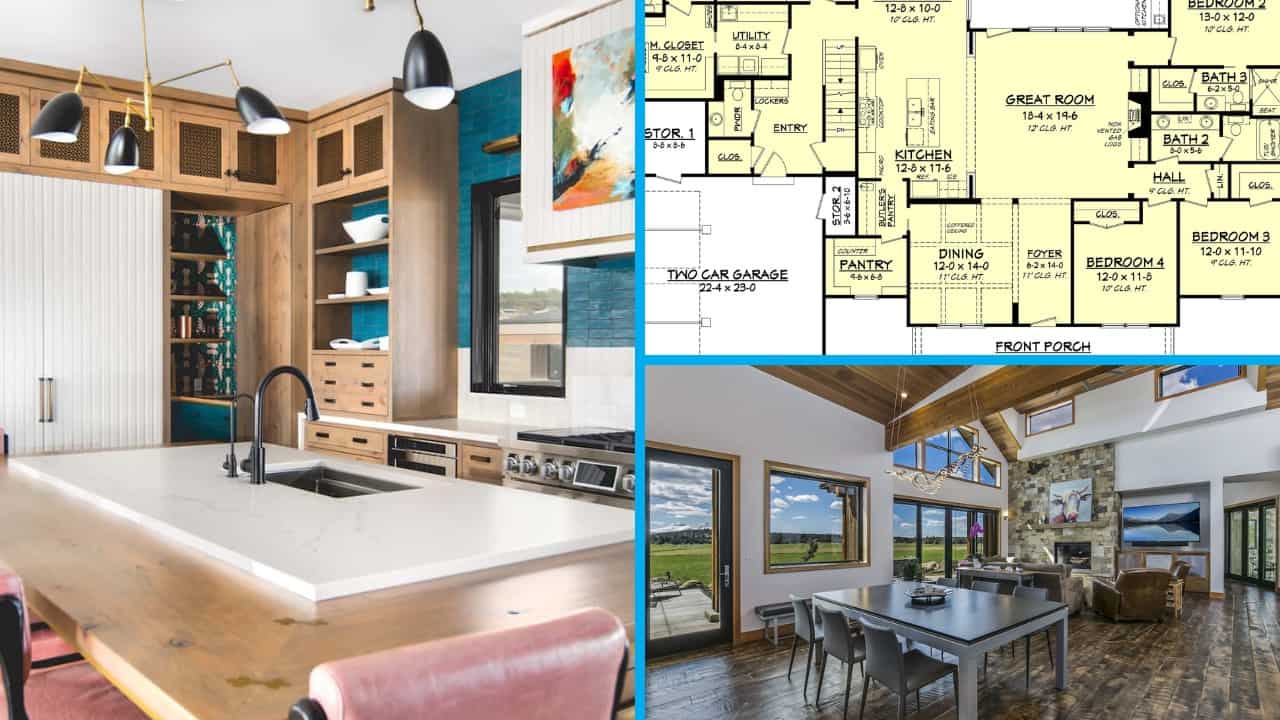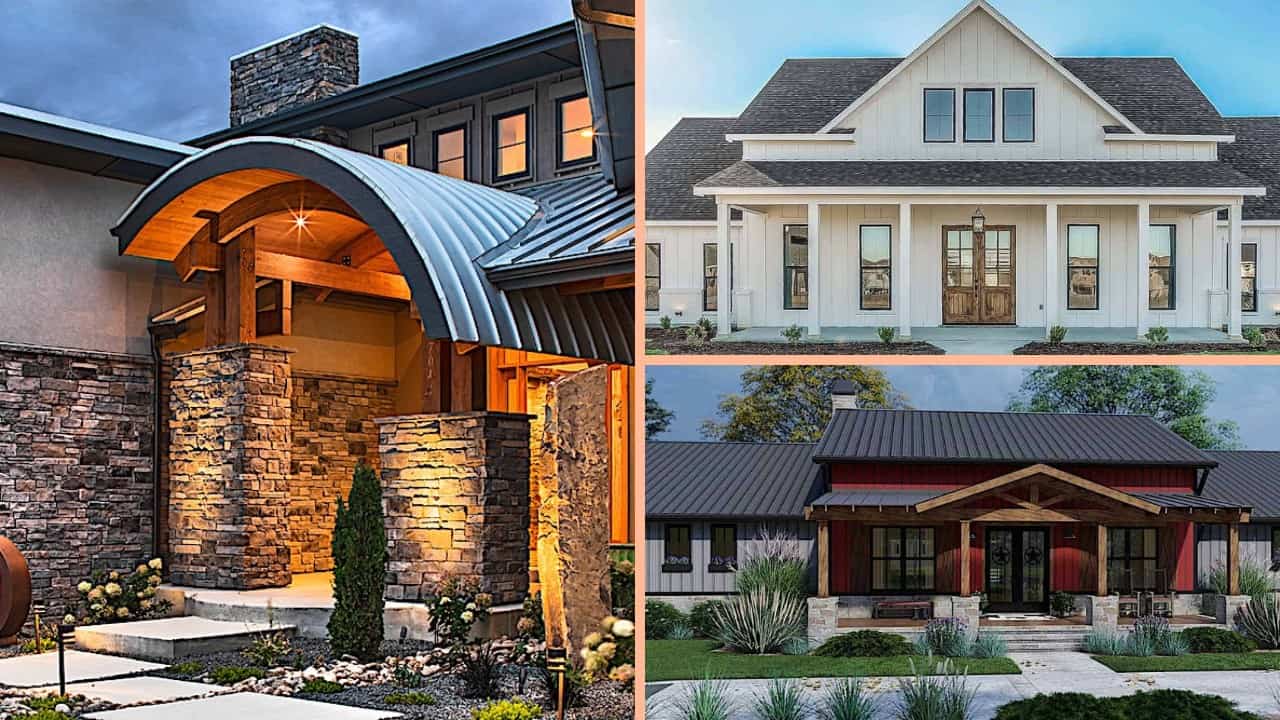Federal Style: Old World Architecture with an American Twist
By Rexy Legaspi | Updated April 04, 2023
How Classic Architecture Defined New World Style
Just imagine the United States in 1780 – a new nation that four years before won its independence after fighting the Revolutionary War against Great Britain. Impassioned by a nationalistic spirit, the developing country sought to remove traces of British influence and establish its own cultural identity.
From 1780 to 1840, the Federal style dominated the American architectural scene. It was a period of change as the Federal system was established. With a new form of government, the young republic created its own architectural style and called it Federal, for the new age of federalism. While it evolved from the Georgian style – the prevailing architectural trend in the colonies between 1700 and the Revolutionary War – the Federal design owed a lot to Robert Adam, one of Great Britain’s leading neoclassical architects.
Thus, the Federal style is also referred to as the "Adam style" – after Robert Adam, whose work was inspired by ancient Greek and Roman forms and emphasized the tasteful ornamentation and gracefulness of the building’s proportions.
Lets take a closer look at Federal Architecture, its origins and defining features, key architects of the style, and famous examples of the styles designs.
A simple shape, symmetry, balance, and clean lines give this stately 2-story, 3,833-square-foot Plantation style home tremendous curb appeal. Borrowing from the Federal style, the 3-bedroom, 3.5-bath home features 2-story columns, a wide front porch, a balcony above, and two side balconies on the second floor that can be reached from the master suite on one side and the study on the opposite side (Plan #137-1375).
What Is Federal Style?
If you’ve visited places on the Eastern seaboard, it’s very likely that you’ve seen a number of historic and original Federal style homes. From Provincetown, Massachusetts, to Savannah, Georgia, there are wondrous examples of the style that thrived with the birth of a new nation. And the name “Federal” symbolized the country’s first national architectural style.
Most architectural purists call the design "Adam” since it patterned a great deal of its key elements from contemporary European influences, particularly the English Adams brothers – Robert and James. Both brothers traveled – and studied – in Italy and popularized architectural details from original Roman and Greek buildings instead of Renaissance interpretations of them.
7 Federal Features
1. Federal homes and buildings have a simple shape – either a rectangular or square structure that can be two or three stories high. Traditionally, the Federal design is just two rooms deep, but some homes are made larger with projecting wings on both sides.
In the true spirit of the Federal design, this lovely 2-story, 3,672-sq.-ft. Southern Colonial style home features a simple shape, clean lines, proportion, and balance. Truly a standout in any neighborhood, the home includes 3 bedrooms and a wing that blends seamlessly with the shape and overall flow of the design (Plan #201-1013).
2. Symmetry and balance also define Federal architecture. Like the Georgian and Colonial styles that were predominant in the colonies before the Revolutionary War, the Federal style has a balanced positioning of windows, doors, and rooms that is visually appealing. But there are differences.
3. Windows in Federal homes are usually double-hung sash windows with shutters. These are arranged individually in vertical and horizontal symmetry. An elliptical fan-shaped window over the paneled door and in some cases a Palladian window installed directly atop the front entrance or in a gable are used as decorative accents.
Bask in the serene surroundings of this beautiful 2-story, 3,148-sq.-ft., 4-bedroom home. Typical of the Federal style are its double-hung sash windows and the Palladian window atop the front entrance (Plan #164-1129).
4. Among the most popular Federal roof styles are hip roofs with a balustrade, simple gable shapes with or without dormers, and center gable roofs with an exterior facade pediment. The dormers are both decorative and functional, as they allow more natural light to filter into the home.
A gable roof with a balustrade over the front door is illustrated in this classic 2-story Georgian-Colonial style home with 3,525 sq. ft. of living space, 4 bedrooms, and 3.5 baths (Plan #195-1119).
A gable roof with dormers adds to the charm and appeal of this stately 2-story, 6,858-sq.-ft. home with Colonial touches. The home’s exterior facade includes white Greek columns that support the small porch entry, two chimneys, and symmetrically arranged double-hung windows (Plan #196-1023).
5. Understated exteriors are typical in Federal homes. There are tall, narrow columns that frame the entrance, and the moldings are quite simple. While some homes use brass and iron, the overall concept for the front facade is a simple and dignified look.
6. A decorated front door is the centerpiece of a Federal home. The door design may be simple, but a closer look reveals somewhat grander ornamentation. You may find a portico or a entry porch surrounding the front door and brass hardware incorporated on doors and entryways.
The decorative features most commonly associated with a Federal style home’s front door are:
- Elliptical or semi-circular fanlights, or transoms, over the door that are considered the “biggest design signatures of the Federal style.”
- Sidelights flanking the front door
- Decorative stair rails and iron balconies that are used to enhance the appearance of the front entrance
Top: Here’s the typical front door of a Federal style home as shown in this beautiful 2-story, 4-bedroom, 4,378-sq.-ft. Southern style home. First, there’s the fanlight above the wood door and the sidelights flanking the door, then the intricate design on the iron railing set between the columns of the entry porch. The rest of the exterior is a picture of symmetry and balance in the columns supporting the entrance, windows with decorative shutters, and chimneys flanking the gable roof (Plan #140-1008). Bottom: Another elegant home – this 2-story, 6-bedroom, 7,918-sq.-ft. Georgian Colonial design – once again features a symmetrical arrangement of windows and doors on the exterior facade and a magnificently landscaped pathway to the covered entry porch. Atop the center door is a fanlight. You can see a glimpse of the detailed ornamentation on the door and the slightly arched transom (Plan #195-1237).
7. Federal style residences and buildings also highlight geometric concepts in elliptical, circular and fan-shaped decorative motifs – that are formed by fluted radiating lines.
This view from inside the luxury Georgian Colonial style home shown above gives a full picture of the amazing geometric decor motifs on the front door and the elliptical transom (Plan #195-1237)
Federal Style Today
Given its timeless features and elements, the Federal style lives on in the 21st century. Certainly, there are modifications, but the defining characteristics of the style are recognizable – the tried-and-true concepts of symmetry, balance and proportion, and even the geometric decor motifs are around. But the style can also have a more contemporary vide by being more spartan, simplistic, and rectilinear.
Top: The attractive exterior facade of this stunning 1.5-story, 3,254-sq.-ft. Country home includes a Dutch Gable roof, covered front porch, and wood door with glass panes. The interior is just as appealing with the main floor master suite, which includes a huge shower and a free-standing tub, plus spacious his and her walk-in closets. The kitchen has a walk-in pantry, kitchen island. and peninsula eating bar. There’s also a den and family room and a rear covered porch (Plan #204-1017). Bottom: Unmistakably Federal in style, this contemporay home is also unmistakably NOT from the 18th or 19th centuries. It demonstrates signature Federal traits like the front pediment, 2-story Greek columns, and symmetry in the window placements and the wings on each side, but it is decidedly modern in its lack of decorative trim and decor and the large 2-story expanse of entryway glass and geometric arrangement of the panes (Plan #195-1152).
Key Federal Period Architects
During this period of popularity, American architects rose to the forefront with their Federal style buildings – creating their own personal interpretations without losing the original concept of the symmetry, spare ornamentation, and simplicity advocated by the Adams brothers.
In addition to Thomas Jefferson and Benjamin Latrobe, who stamped their style on the White House, the following are some of the major architects of the Federal period and their memorable – and now, historic – traditional buildings:
Asher Benjamin
While the Connecticut-born Benjamin designed several famous buildings in each of the New England states, he is famous for writing The Country Builders Assistant – the first manual written and published in the United States. Benjamin was only 24 years old when he wrote the handbook – a result of his dissatisfaction with the lavish and expensive handbooks imported from England that most builders relied on.
Benjamin worked with Charles Bulfinch – another pioneer of the Federal style. Before his career was over, Benjamin wrote six other handbooks on design that heavily influenced the look of cities and towns throughout his native New England and the South until the Civil War.

Charles Bulfinch
Regarded as the first native-born American to practice architecture as a profession, Charles Bulfinch is noted for his works in Boston and Washington, DC. One of the leading proponents of the Federal style, his works are noted for their simplicity, balance, and classic lines.
His most famous work in Washington, DC, is the Capitol Rotunda, which is designed in the Neoclassical style and was completed in 1824.

The exquisite details of the Capitol Rotunda – the central rotunda of the United States Capitol in Washington, D.C. – are a tribute to Charles Bulfinch, who completed the work between 1818-1824 (photo credit: USA-US Capitol 6, by Ingfbruno under license CC BY_SA 3.0).
In Boston, Bulfinch was responsible for the design of the Massachusetts State House, the Boston Common, and the remodeling and enlargement of Faneuil Hall in 1805. His work on the three houses of Senator Harrison Gray Otis – built in 1796, 1800, and 1806 on Beacon Hill – in his simple and elegant Federal style “defined the character of Boston’s most fashionable district.”


Top: The first Harrison Gray Otis House at 141 Cambridge Street has all of the signature features of the Federal style: symmetry and balance and the decorative geometric elements. The house includes a fanlight window over the front door, a Palladian window, and a second fanlight window on the top floor (photo credit: 1st Harrison Gray Otis House by Daderot under license CC BY-SA 3.0). Bottom: Located at 45 Beacon Street, the third Federal style house designed by Bulfinch for Harrison Gray Otis was the largest of the homes. This 4-story structure features a small portico with narrow pairs of columns. Unlike the first house, this one did not have the fanlight windows but had a hip roof with a balustrade (photo credit: Harrison Gray Otis Building Third Boston by Swampyank under license CC BY-SA 3.0).
John McComb Jr.
Born in New York City, he had a distinguished career in New York and Princeton, New Jersey. He designed many landmark buildings in New York City, including Gracie Mansion, New York City Hall, Hamilton Grange (or The Grange), and Montauk Point Lighthouse.
The majestic New York City Hall – whose cornerstone was laid in 1803 – opened formally in 1812. While McComb was not the lead designer (honors go to Joseph Mangin) he supervised the construction and designed the architectural details (photo credit: New York City Hall exterior, October 2016, by MusikAnimal under license CC BY-SA 4.0).
Top: The beautiful Federal style residence of the Mayor of New York City has a wide front porch and a second floor veranda. Designed by McComb, Gracie Mansion was actually built in 1799 by Archibald Gracie, a Scottish born shipping magnate, businessman, and merchant in New York City and Virginia (photo credit: Jim Henderson, Public Domain). Bottom: Looking strikingly similar to Gracie Mansion, The Grange – a Federal-style mansion originally built in Harlem – was named by Alexander Hamilton after his grandfather’s estate in Scotland. Hamilton hired McComb to design the mansion, which was completed in 1802 – and has seen several locations since it was originally constructed. The photo – taken in 2010 – captures the renovated mansion in its latest location in Upper Manhattan (photo credit: Jim Henderson, Public Domain).
Samuel McIntire
If you visit Salem, Massachusetts, you’ll be treated to a nostalgic Federal-era neighborhood named after one of Salem’s native sons – Samuel McIntire. A superb architect, furniture maker and wood-carver, McIntire designed private residences and public buildings in Salem. His homes were usually three-story structures, each with four rooms around a central hall.
In 1799, McIntire went into business with his brothers, who erected the buildings while he supervised all phases of design, including exterior and interior ornamentations and decorative elements. He is best known for the Gardner Pingree House on Essex Street – built in 1804 in the Federal style for John and Sarah Gardner, who belonged to one of the wealthy merchant families in Salem.
The home is a rectangular three-story red brick building with an elaborate circular portico with four columns and a center door featuring an elliptical fanlight window with gilded metalwork. The windows have black shutters; the front door is flanked by sidelight windows; and marble trim bands separate the floors.


Dr. William Thornton
An amateur architect who created the original design for the U.S. Capitol in Washington, DC, Dr. William Thornton was born in the British Virgin Islands and received his medical degree from the University of Aberdeen. He immigrated to the United States in 1787, became a citizen, and settled in Philadelphia.
Encouraged by winning a building design competition promoted by the Library Company of Philadelphia in 1789, Thornton entered the competition for the Capitol in Washington. While the designs he submitted were received months after the competition closed, his design was selected by the judges who were not satisfied with the entries submitted.
While Thornton’s revised Georgian design of 1795 was used for the exterior of the north and south wings adjacent to the central rotunda, Benjamin Latrobe completely redesigned the interiors.

In addition to the U.S. Capitol, Thornton designed residences including the Octagon House, which President James Madison used after the White House was burned. The Octagon is now the headquarters of the American Institute of Architects.
Two of the noted residences he designed were for relatives of President George Washington and his wife, Martha. Woodlawn House, a historic mansion in Fairfax County, Virginia, was originally a part of Mount Vernon. It was designed for Major Lawrence Lewis (nephew of President Washington) and his wife, Eleanor Nelly Parke Custis (granddaughter of Martha Washington).
In 1808, Thornton designed Tudor Place for Thomas Peter and his wife, Martha Parke Custis (another granddaughter of Martha Washingtons).

Russell Warren
A carpenter like Asher Benjamin, Russell Warren became one of Rhode Island’s most renowned architects. He designed a number of mansions for wealthy merchants in Bristol, R.I. during the early part of his career.
When he moved to Providence, he worked with other noted architects in designing buildings like the Providence Arcade and the Westminster Congregational Church. Although he had projects in other cities, his most prominent and historic designs were done in Bristol.
Warren’s work on the stately mansions was noticed – and admired – by General George de Wolf, one of the wealthiest seafarers and slave traders in the nation. Beginning in 1808, Warren designed four magnificent mansions for the de Wolf family. Unfortunately, only one of these palatial residences survived, Linden Place, which was General de Wolf’s residence and is described as “one of the most opulent versions of the Federal style in the country.”
Built in the center of Bristol at 500 Hope Street, Linden Place has a magnificent front facade with its very tall columns, floor-to-ceiling windows, and elaborate ornamentation in its railings.


Top: The original Linden Place – the majestic mansion designed by Warren for General George de Wolf – was constructed in 1810 (photo credit: Linden Place by Bbucco under license CC BY-SA 4.0). Bottom: Linden Place in 2017: The towering Corinthian columns of spectacular three-story mansion designed for General George de Wolf are still there. So is the front door with the fancy fanlight topped by a fanlight window decorated with geometric motifs. The 1810 mansion was saved from destruction or development in 1989 by the non-profit Friends of Linden Place. Today the Federal style mansion is a historic house museum (photo credit: Linden Place in Spring by Bbucco under license CC BY-SA 4.0).

The William de Wolf House, one of the four mansions Warren designed for the de Wolf family, was built by William de Wolf in 1808. The Federal style home was demolished in 1944 (photo credit: Arthur W. LeBoeuf, Historic American Buildings Survey, Public Domain).
If you love classic Colonial and Georgian style homes, then you’ll definitely be “in the zone” with Federal style architecture. Just think of all the amazing geometric decor accents you can add to your entry porch, fanlight, and Palladian windows!
Footnote: The lead image in this article is a lovely 2-story, 4-bedroom Southern style home with the classic elements of Federal architecture. For more details on the charming home with 5,203 sq. ft. of living space, see Plan #106-1297
About Us
Find Your Plan
Find Your Plan
Our Services

Offer code valid for 60 days
Sign up and save $50
on your first order
Sign up below for news, tips and offers. We will never share your email address.
Products under $300 excluded.
Thank you for signing up!
To receive your discount, enter the code "NOW50" in the offer code box on the checkout page.





















